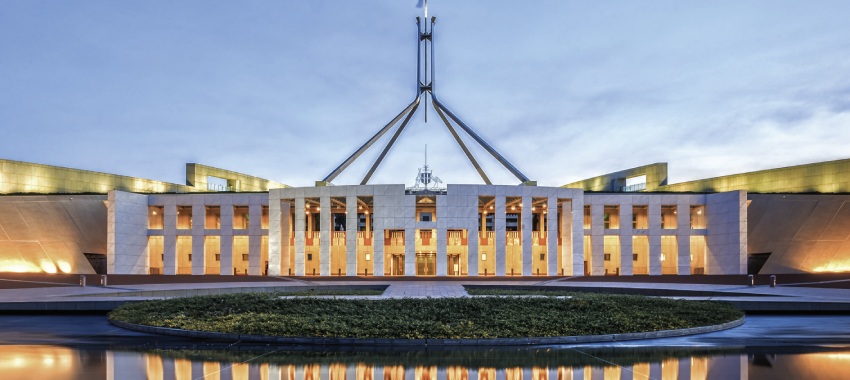
How is the new government planning to tackle Australia’s housing affordability crisis?
A large part of the narrative around freshly appointed Prime Minister Anthony Albanese is that he grew up in public housing in Sydney’s inner west, raised by a single mother on a disability pension. He is now at the other end of the property spectrum, as a landlord in the same region.
When he recently announced his full ministry, it was evident that he had promoted the housing portfolio into cabinet, a move his predecessor hadn’t made.
This content is available exclusively to
The Adviser premium members.
Julie Collins, who was previously minister for housing and homelessness under the Gillard government, has now returned to the role.
“If you follow my history in politics, housing has been a passion of mine,” Mr Albanese told journalists, when he was asked about the cabinet movement.
“It’s also been a passion of mine that the federal government should be playing a role in areas like housing and urban development and those issues. And that will be an absolute priority of my government.”
Both major parties had promised to solve the nation’s housing affordability crisis as they ramped up their campaigns in the weeks leading up to the federal election.
They knew aspiring buyers were sweating, after housing prices shot up by 22.1 per cent in 2021, the third-fastest annual rate of growth in national history and the fourth-fastest internationally, according to the OECD.
It now takes around 11 years and five months for an Aussie on a median income to save a 20 per cent deposit, according to ANZ and CoreLogic, with the time frame stretching out to 14 years and one month in Sydney.
And pressures for home buyers are likely to keep building as the Reserve Bank has begun to increase rates.
But now that Labor has been confirmed in government, what is it planning to do about the problem?
Help to Buy scheme
A new shared equity scheme that the Labor Party pitched during its election campaign, the Help to Buy scheme involves an equity contribution from the federal government of up to a maximum of 40 per cent of the purchase price of a new home (and up to a maximum of 30 per cent of the purchase price for an existing home).
Buyers will only need to have a deposit of at least 2 per cent and they will not need to pay lenders mortgage insurance (LMI). There will be 10,000 places each financial year.
The program will be open to Australians with a taxable income of up to $90,000 per annum, or for couples with a combined income of $120,000, who currently don’t own or have an interest in a residential property. It is not only open to first home buyers.
Buyers will be able to buy an additional stake in the home during the loan period, when they’re able to do so, but they need to buy a minimum interest holding at 5 per cent. If their income exceeds the annual income threshold for two consecutive years, they will be required to repay the government’s financial contribution in part or whole as their circumstances permit.
The Labor government has sold its scheme as a way to help more buyers enter the property market sooner, by giving them a smaller deposit, a smaller mortgage and smaller mortgage repayments. It has estimated that on a $950,000 home for example (the cap that applies for Sydney and NSW regional centres), the government would contribute up to $380,000 – which would produce a maximum saving of $285,000 on the purchase.
A number of states already offer their own shared equity schemes, including Victoria, Tasmania and Western Australia. NSW has freshly launched its own shared equity program, targeting teachers, nurses, police, single parents and older singles. It will buy stakes of the same size and the national scheme. It remains to be seen how the federal scheme would operate in conjunction with the state programs.
The Grattan Institute has supported the idea of a national shared equity scheme, as a way to combat the housing affordability crisis. The think tank has warned that even if house prices were to fall by 20 per cent from current levels, it would still take the average Australian about nine years to save a 20 per cent deposit on a home.
According to the think tank, in 1981, 60 per cent of 25 to 34-year-olds in Australia owned their homes, with the poorest 40 per cent of the demographic having a home ownership rate of 57 per cent. In 2016, the overall home ownership rate for the age group was 45 per cent. For the poorest 40 per cent, the home ownership rate had more than halved over 35 years, down to 28 per cent.
However, the scheme faced criticism from both ends of the political spectrum. Speaking to the ABC, former minister for finance Simon Birmingham slammed the scheme, saying Australians do not need “Mr Albanese at the kitchen table with you, owning part of your home with you”.
Greens leader Adam Bandt also told the ABC that the program would be a “small answer to a huge problem”, only helping about 5 per cent of first home buyers.
$10 billion Housing Australia Future Fund
A program that will build 30,000 new social and affordable housing properties in its first five years – with 20,000 for social housing and 10,000 affordable homes, to be allocated to frontline workers such as police, nurses and cleaners. Of the 20,000 social housing properties, 4,000 will be allocated to women and children fleeing domestic and family violence situations, as well as older women on lower incomes who are at risk of homelessness.
Investment returns from the Housing Australia Future Fund would be transferred to the National Housing Finance and Investment Corporation (NHFIC), to pay for social and affordable housing projects.
The fund is additionally meant to provide $200 million for repair, maintenance and improvement of housing in remote Indigenous communities across Western Australia, South Australia, Queensland and the Northern Territory.
A further $100 million to be committed for urgent housing and essential infrastructure in the NT homeland.
This will also involve negotiations for a new remote housing agreement with the NT that includes homelands, when the current agreement expires in mid-2023.
According to the government, more than 62,000 Indigenous people live in overcrowded housing in remote and very remote areas, with significant impacts for health, economic and social outcomes.
The fund is also supposed to use $30 million in investment returns for more housing and specialist services for veterans who experience homelessness or who are at risk of homelessness.
Under the Housing Australia Future Fund, the government intends to allocate $1.7 billion worth to women – $1.6 billion for long-term housing and an additional $100 million for crisis transitional housing options. The latter is meant for women escaping domestic and family violence situations and older women who are at risk of homelessness.
National Housing Supply and Affordability Council
The Labor Party stated that it would establish the council, which would set targets for land supply in consultation with state and territory governments. It would also be tasked with advising on ways to improve land-use planning and supply for housing, and collecting nationally consistent data on housing supply, demand and affordability.
The body would also report on rental affordability, social housing and homelessness, as well as advise on ways to boost the construction of social and affordable housing.
The National Housing Finance and Investment Corporation (NHFIC) is also set to be renamed to Housing Australia and it will be responsible for key housing programs as well as the National Housing Supply and Affordability Council.
A review of property price caps under the previous government’s Home Guarantee Scheme
Scott Morrison’s government had expanded its Home Guarantee Scheme just before this year’s election took place, doubling the number of places in the new financial year under its programs for first home buyers and single parents. It had also launched a new guarantee scheme for regional buyers, who have not owned a home for five years. All up, the programs would now have 50,000 spots for eligible buyers, with 35,000 under the First Home Guarantee (formerly the First Home Loan Deposit Scheme), 5,000 for the Family Home Guarantee and 10,000 for the Regional Home Guarantee.
Under these schemes, buyers are able to purchase a home with a deposit as small as 5 per cent (under the first home buyer and regional schemes) or 2 per cent if they are a single parent. They don’t pay LMI.
It remains to be seen how the new government will treat the scheme – at the time of writing, NHFIC indicated that it expects it will still administer the new expanded number of spots.
But the Labor Party had promised to review and increase the price caps that applied under the schemes, even as the previous government cranked up the maximum prices in April.
The new caps, which were meant to apply from the 2023 financial year, saw thresholds such as $900,000 for Sydney and NSW’s regional centres – compared to its previous $800,000.
Former shadow minister for housing and homelessness Jason Clare had said it was “obvious” the existing caps were too low.
“House prices have skyrocketed in the last year and these caps haven’t kept up,” Mr Clare said.
“If you follow my history in politics, housing has been a passion of mine”
- Prime Minister Anthony Albanese
[Related: The Affordability Puzzle]
